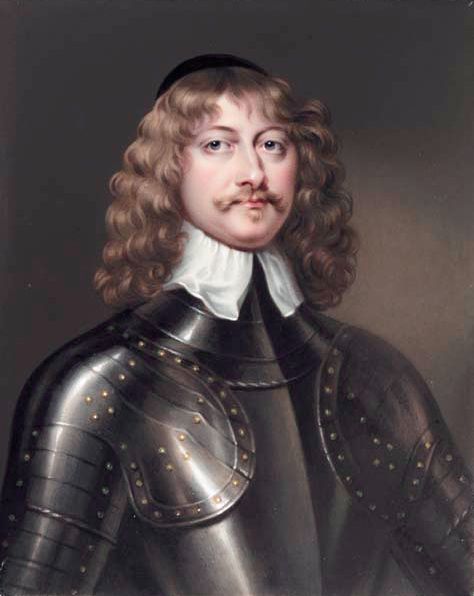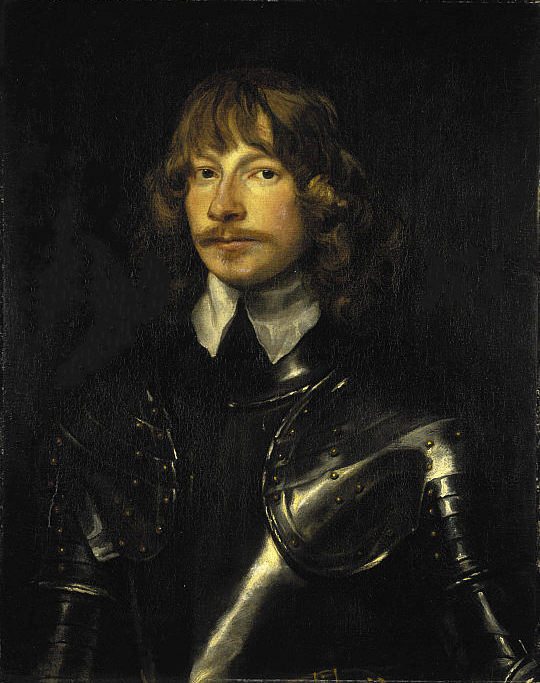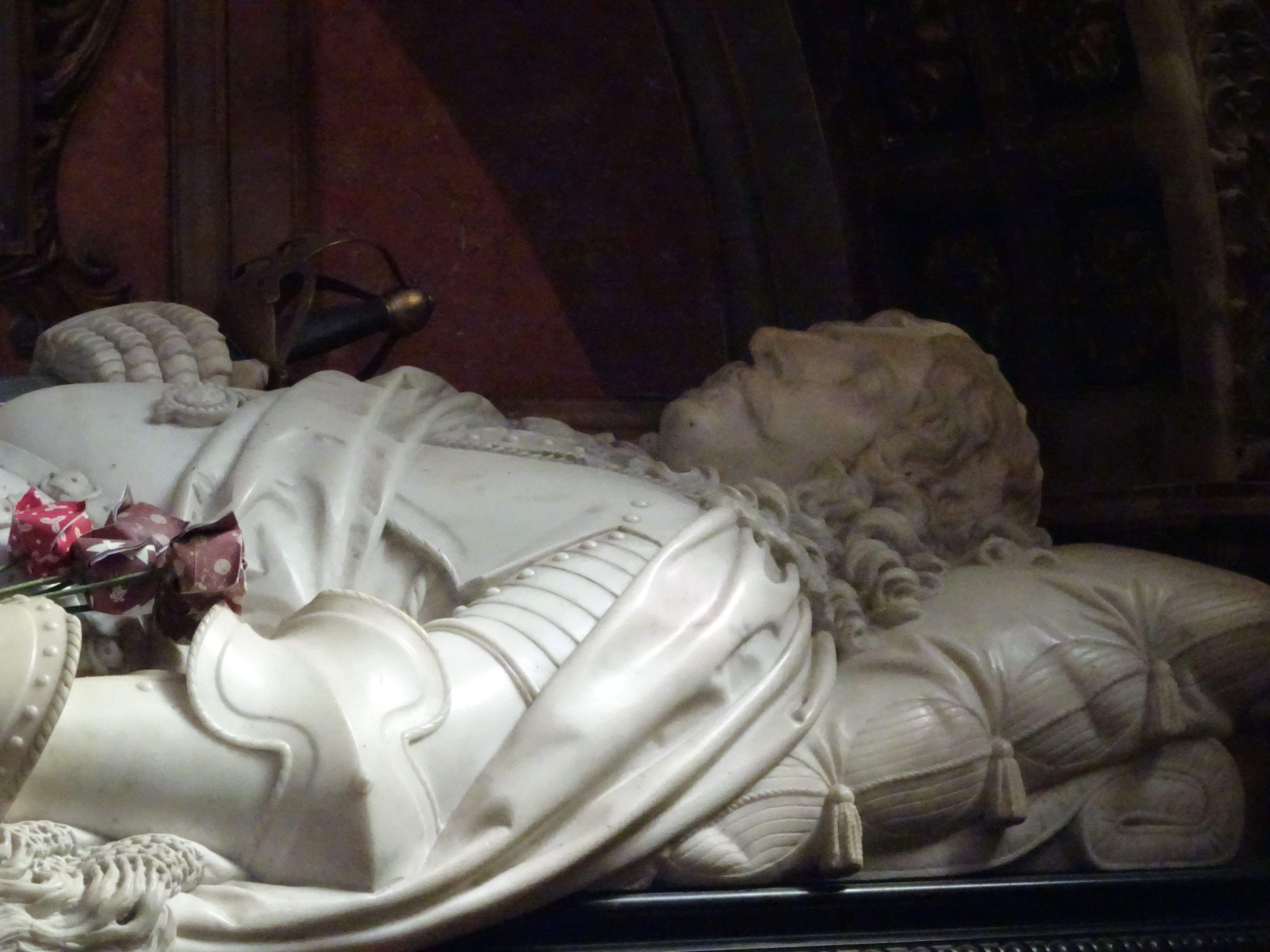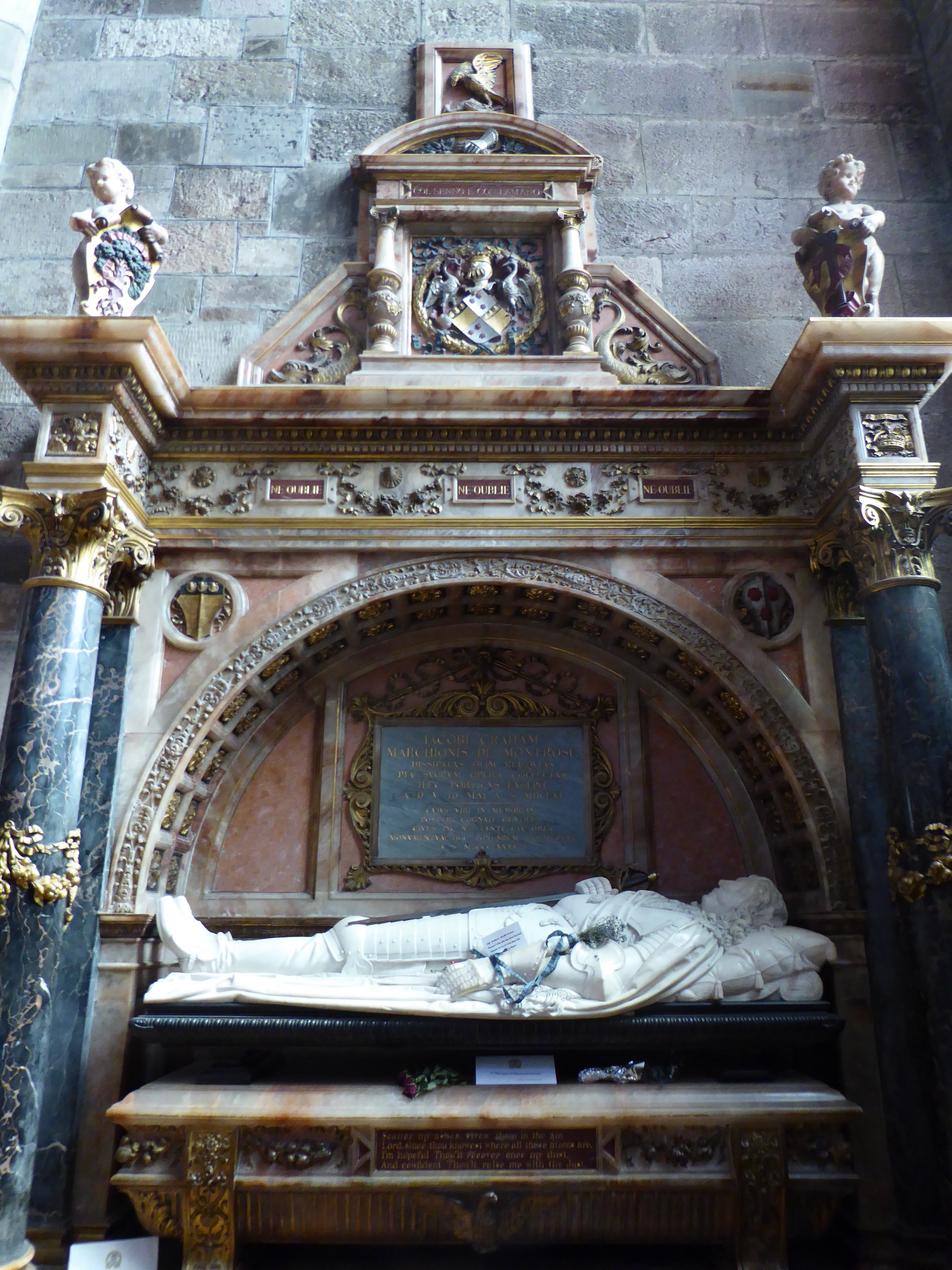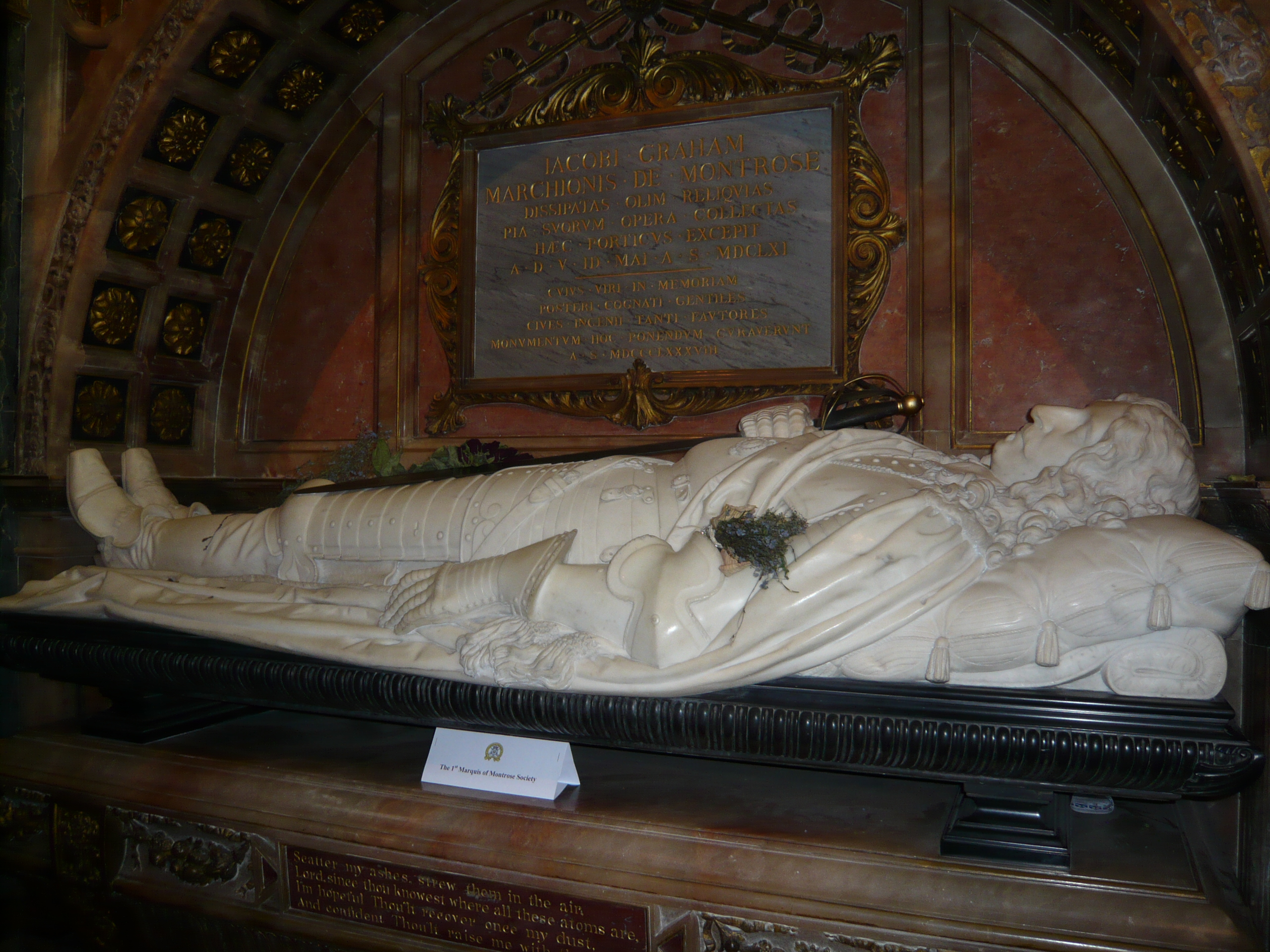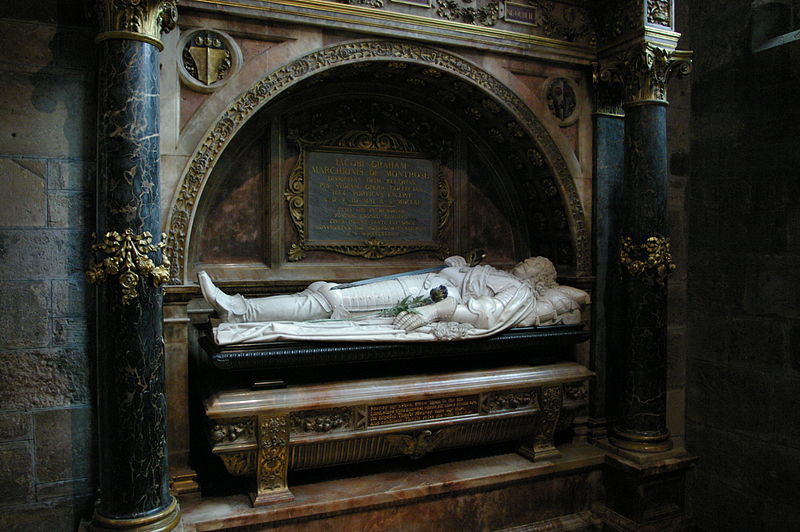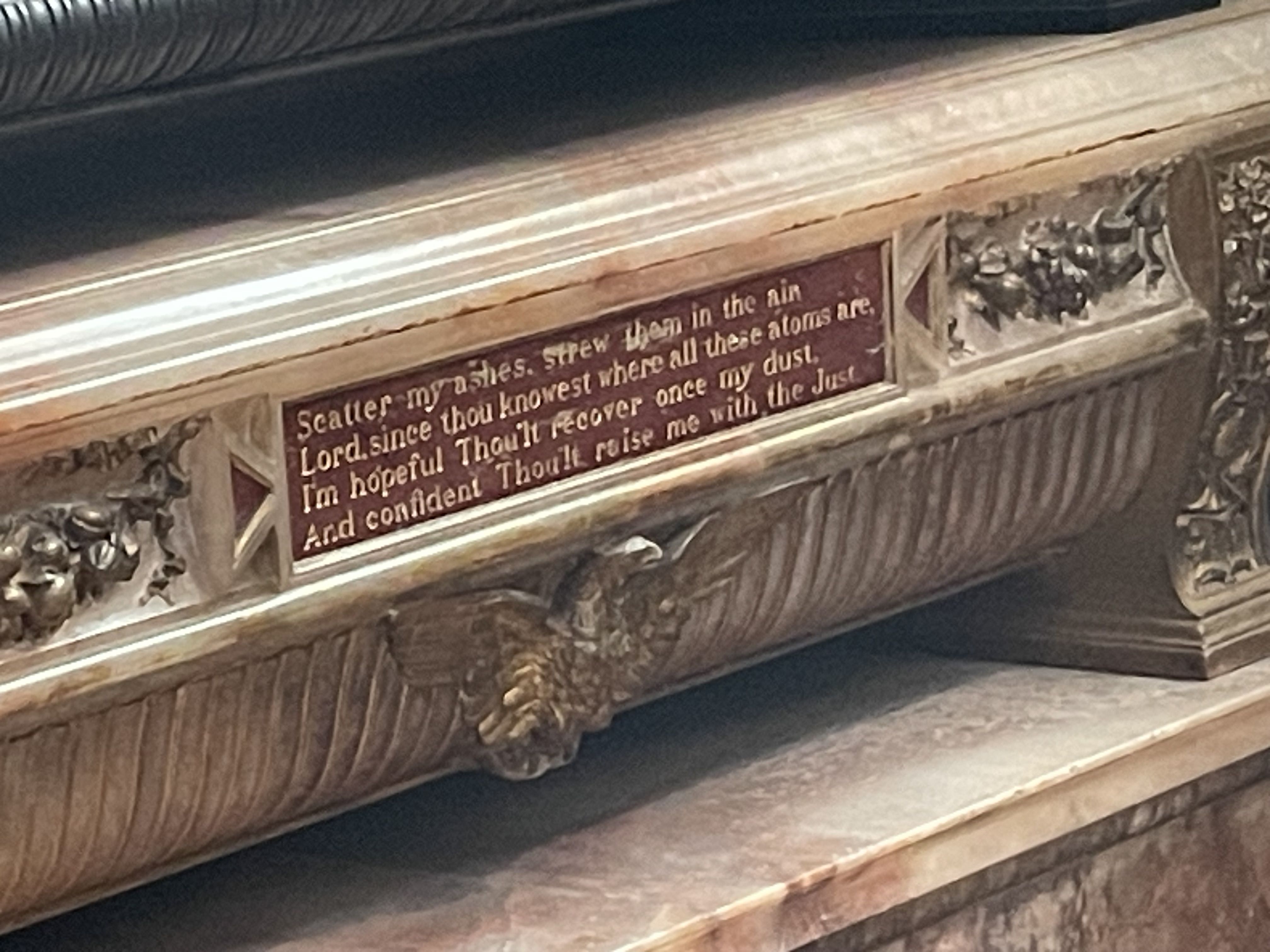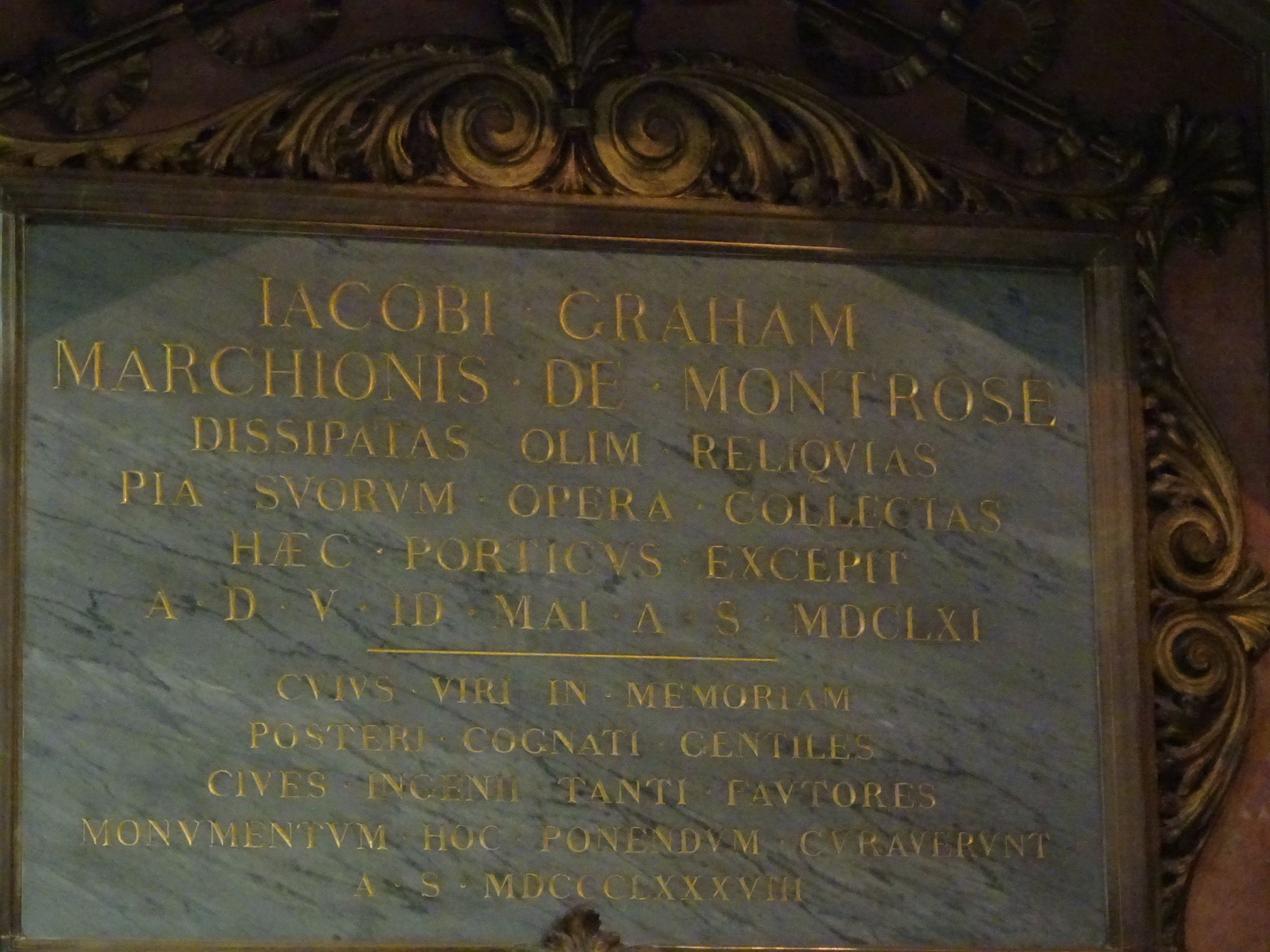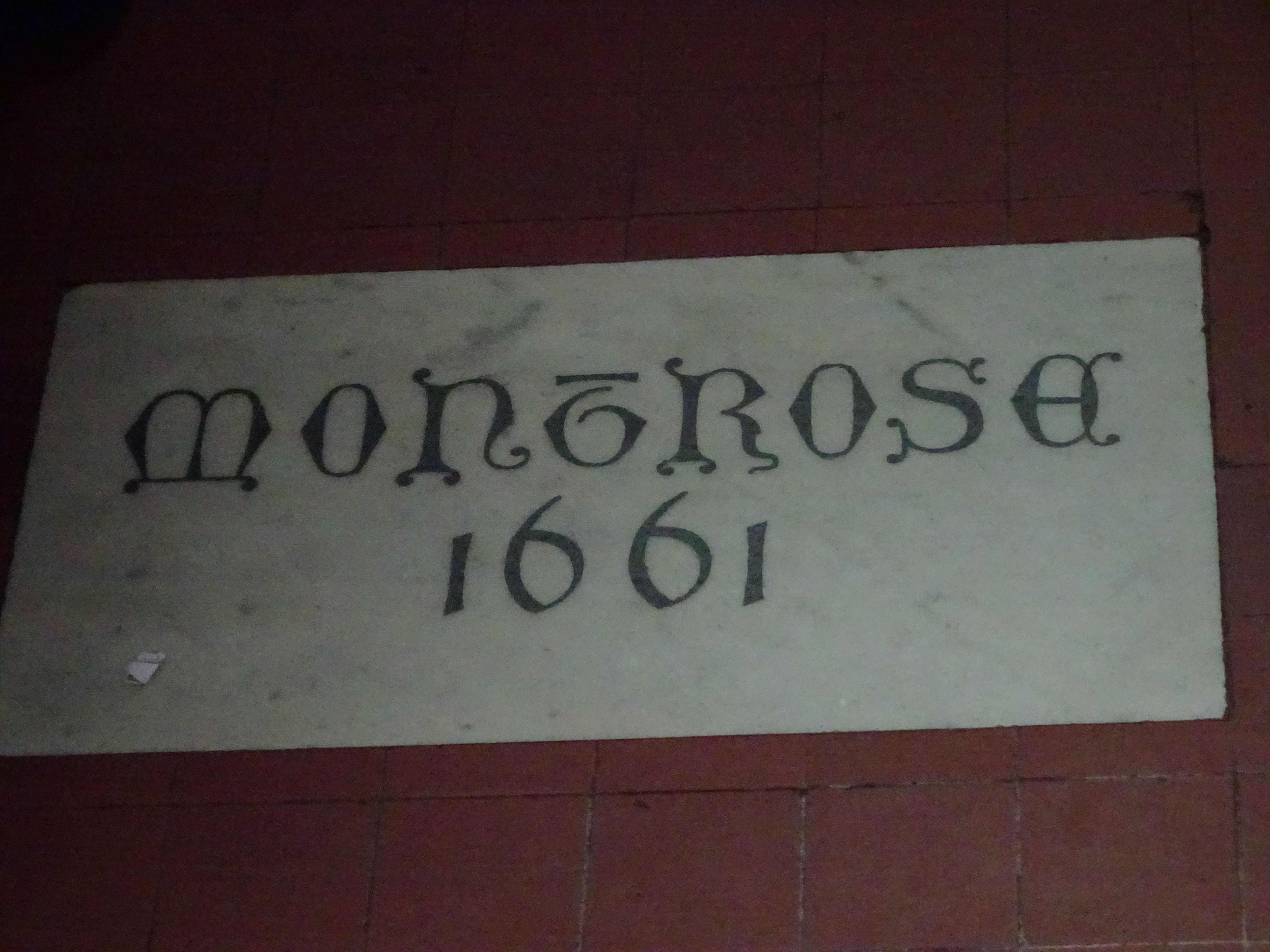Born sometime after 22 October 1612 based on Napier's record that on 22 October 1632 Montrose was transacting business as a minor.
James Graham became 5th Earl of Montrose in 1626 when his father died.
He obtained his education from the University of St Andrews, and married Magdalene Carnegie when he was seventeen.
He was a Scottish general. He fought for Charles I in the Civil War but was defeated in 1645. In 1650 he returned from exile on the continent but was captured and brought a prisoner to Edinburgh. On 20 May he was sentenced to death by the parliament. He was hung on the 21st, with Wishart's laudatory biography of him put round his neck. To the last he protested that he was a real Covenanter and a loyal subject.
His head was removed and stood on the "prick on the highest stone" of the Old Tolbooth outside St Giles Cathedral from 1650 until the beginning of 1661.[8]
Shortly after Montrose's death the Scottish Argyll Government switched sides and became Royalists too.
On 7 January 1661 the mangled torso of Montrose was disinterred from the Burgh Muir and placed in a coffin, carried under a velvet canopy to the Tolbooth, where his head was reverently removed from the spike. The procession was accompanied by the nobles and gentry on horseback, with many thousands following on foot; colours were flying, drums beating, trumpets sounding, muskets cracking, and cannon roaring from the castle.[9] His limbs brought from the towns (Glasgow, Perth, Stirling and Aberdeen) to which they had been sent, and the whole placed in a sumptuous coffin, which lay in state in Holyrood Palace. A splendid funeral was held in Saint Giles's church on 11 May 1661.[10][11]
Montrose's torso would have been originally given to his friends; he was, however, the subject of an excommunication which was why it was originally buried in unconsecrated ground. In 1650 his niece, Lady Napier, had sent men by night to take away his heart. This relic she placed in a steel case made from his sword and placed the whole in a gold filigree box, which had been presented to her family by a Doge of Venice. The heart in its case were retained by the Napier family for several generations until lost amidst the confusion of the French Revolution.
Sources: Wikipedia
Born sometime after 22 October 1612 based on Napier's record that on 22 October 1632 Montrose was transacting business as a minor.
James Graham became 5th Earl of Montrose in 1626 when his father died.
He obtained his education from the University of St Andrews, and married Magdalene Carnegie when he was seventeen.
He was a Scottish general. He fought for Charles I in the Civil War but was defeated in 1645. In 1650 he returned from exile on the continent but was captured and brought a prisoner to Edinburgh. On 20 May he was sentenced to death by the parliament. He was hung on the 21st, with Wishart's laudatory biography of him put round his neck. To the last he protested that he was a real Covenanter and a loyal subject.
His head was removed and stood on the "prick on the highest stone" of the Old Tolbooth outside St Giles Cathedral from 1650 until the beginning of 1661.[8]
Shortly after Montrose's death the Scottish Argyll Government switched sides and became Royalists too.
On 7 January 1661 the mangled torso of Montrose was disinterred from the Burgh Muir and placed in a coffin, carried under a velvet canopy to the Tolbooth, where his head was reverently removed from the spike. The procession was accompanied by the nobles and gentry on horseback, with many thousands following on foot; colours were flying, drums beating, trumpets sounding, muskets cracking, and cannon roaring from the castle.[9] His limbs brought from the towns (Glasgow, Perth, Stirling and Aberdeen) to which they had been sent, and the whole placed in a sumptuous coffin, which lay in state in Holyrood Palace. A splendid funeral was held in Saint Giles's church on 11 May 1661.[10][11]
Montrose's torso would have been originally given to his friends; he was, however, the subject of an excommunication which was why it was originally buried in unconsecrated ground. In 1650 his niece, Lady Napier, had sent men by night to take away his heart. This relic she placed in a steel case made from his sword and placed the whole in a gold filigree box, which had been presented to her family by a Doge of Venice. The heart in its case were retained by the Napier family for several generations until lost amidst the confusion of the French Revolution.
Sources: Wikipedia
Inscription
Scatter my ashes - strew them in the air; - Lord! since thou know'st where all these atoms are, I'm hopeful thou'lt recover once my dust, And confident thou'lt raise me with the just.
Lines written on the Window of his Jail the Night before his Execution.
Family Members
Advertisement
Records on Ancestry
Sponsored by Ancestry
Advertisement




